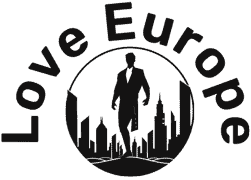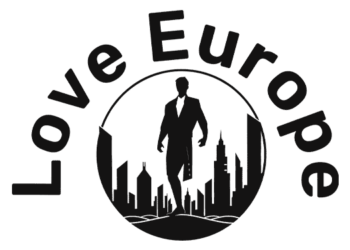Click here to become a member
But gender inequalities in employment stretch well beyond labour-market segmentation and pay gaps. The working conditions and job quality women and men experience across countries, sectors and occupations also vary greatly. Men report higher quantitative demands at work, whereas women are much more likely to report exposure to emotional demands or find themselves in disturbing situations.
Women also tend to work fewer paid hours than men and adjust their working time to the needs of their families. The proportion perceiving their work-life balance positively (82 per cent) is thus similar to that for men (80 per cent). Women however experience more conflicts between working and private life: they worry more about work, feel more exhausted and have a bigger burden of housework to face (74 per cent of women did daily housework and cooking in 2021, compared with 42 per cent of men). And overall, when paid and unpaid work are combined, women do eight full-time weeks more work per year than men.
Income inequality
The share of population living below the poverty income threshold increased in two-thirds of EU member states between 2006 and 2021 and in more than half, amid the pandemic, in the latter year. Non-income data for 2022, focusing on the early stages of the cost-of-living crisis, showed households facing growing financial difficulties, especially those most vulnerable. On average across EU countries, 44 per cent of those in the bottom income decile faced reported difficulties to make ends meet in 2022, compared with 3 per cent in the top decile. Single-parent households were more at risk of energy poverty and women living alone more likely to be affected by it.
Yet there is vast disparity across countries. The 13 member states that joined the EU since 2004 have experienced increasing convergence and remarkable income growth. In many cases, this growth has been stronger among lower-income earners, reducing income inequalities.
Income growth has been more moderate among the 14 older member states, especially among the lowest earners in many cases, leading to growing income inequalities, even in more egalitarian Scandinavia. Mediterranean countries present the most disappointing picture of income growth between 2006 and 2021 (albeit in some inequality declined); hence they failed to match the newer member states in convergence towards higher national incomes.
The welfare state plays a very important role in cushioning market inequalities, which are reduced by an average of 42 per cent across member states by taxes and benefits. This inequality-reducing effect is stronger in most Scandinavian and continental welfare states, as well as a few central-and-eastern European countries, while weaker in others among the latter and Mediterranean EU members.
Age-related inequalities
The ageing of Europe’s population will continue to have implications for employment, working conditions, living standards and welfare. But the extent to which these are subject to an intergenerational divide is a different matter. For instance, while during the pandemic mental health deteriorated for people of all ages, young people and the over-80s were those most severely affected.
More young people lost their jobs then than any other age group. There has since been a recovery but at a slower pace and with the individual psychological consequences and the loss of independence of unemployment experienced at a young age. The share of older workers in the labour market has meanwhile grown since 2007. This has been driven by employment expansion among the over-50s, especially women—albeit inadequate pensions and the rising cost of living may have been drivers here in turn.
Incomes have grown most since 2008 for the over-60s. In southern Europe, the income of this oldest group has increased while that of the youngest has fallen. By contrast, in eastern-European countries those under 60 have fared better than their elder peers in recent years. Both decreases and increases in income have however been less common among older people, for whom pensions are a stabiliser.
On the critical issue of housing, renting has increased generally but especially among those aged 30-39, rising from 38 per cent to 45 per cent between 2010 and 2019. Home ownership was already more common among those over 40 than those below. Housing costs increased more for renters (by 23 per cent) than for homeowners (by 8 per cent) between 2010 and 2019, deepening the gap between the two groups.
Rural-urban divide
The farmers’ protests across member states earlier this year placed rural–urban differences in sharp focus. Over the past decade, employment has increased more rapidly in urban than in rural areas and in general the rate is persistently higher in cities. Median incomes are also higher in urban areas in almost every member state. The rural-urban income gap has thus increased by almost 20 per cent in ten years.
There is also a growing gap in accumulation of ‘human capital’, affecting available individual pathways to employment. Across the EU, 55 per cent of city dwellers aged 25-34 have third-level education, compared with just 34 per cent of their counterparts in rural areas.
A digital divide is also evident—in both skills and infrastructure. Those living in cities are more likely to have digital skills and a computer in their home and enjoy significantly better broadband connections.
Rural residents are however less likely to be overburdened by housing costs or to live in a dark dwelling and can better afford to keep their homes warm. They also suffer less from problems in their neighbourhoods, from pollution and grime to crime and vandalism.
Addressing inequalities
Inequalities persist across the EU, ranging across gender and employment pay gaps, intergenerational disparities and rural-urban differences. While EU-wide income inequality declined significantly between 2006 and 2021—due to convergence between new and old members—the share of population below the poverty threshold increased in most member states. The gap between the rich and poor continues to grow in some countries.
Concentrated efforts and targeted policies are urgently needed to mitigate such deep-rooted inequalities and create a fairer future. A champion of equality within the commission could lead the way—but, regardless, the transversal nature of the challenge means that for every member of the incoming college it should be a priority.
Mary McCaughey is head of information and communication at Eurofound. A graduate of Trinity College Dublin and of the College of Europe, Bruges, Mary has an early background in journalism and has contributed to a wide range of publications, including the Wall Street Journal Europe and the Irish Times.
Source link : http://www.bing.com/news/apiclick.aspx?ref=FexRss&aid=&tid=66fb6d6dff65499387afbefd700e50bd&url=https%3A%2F%2Fwww.socialeurope.eu%2Finequalities-unmasked-disparities-across-the-eu&c=6282968683150410592&mkt=de-de
Author :
Publish date : 2024-09-30 17:00:00
Copyright for syndicated content belongs to the linked Source.





